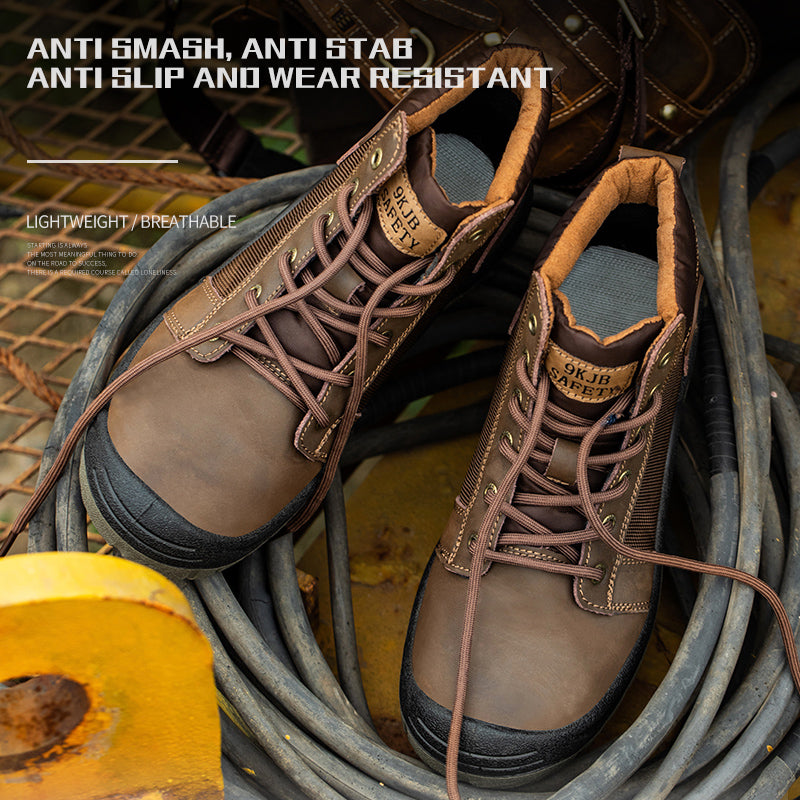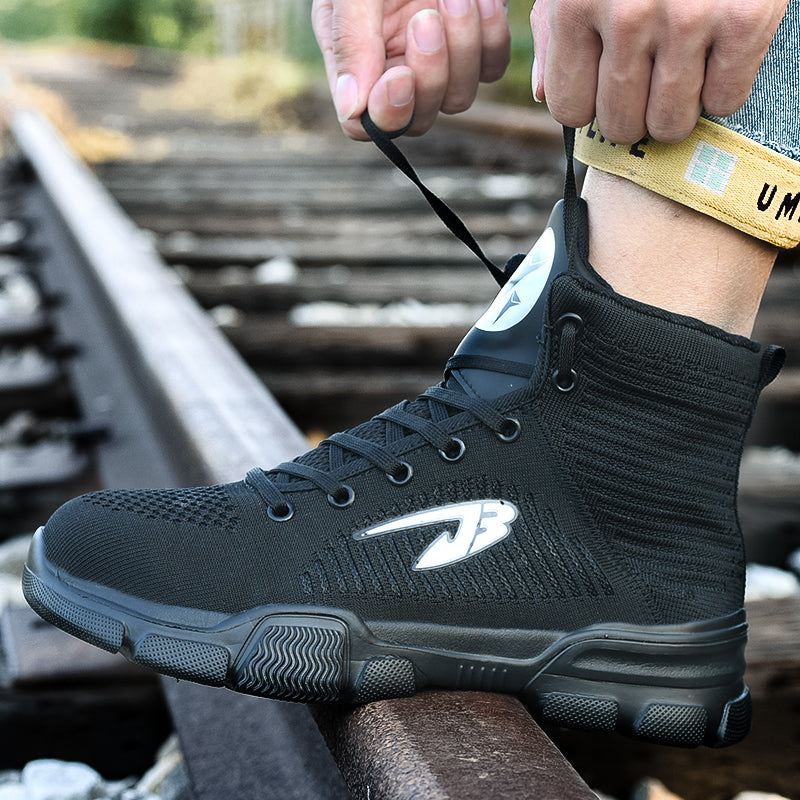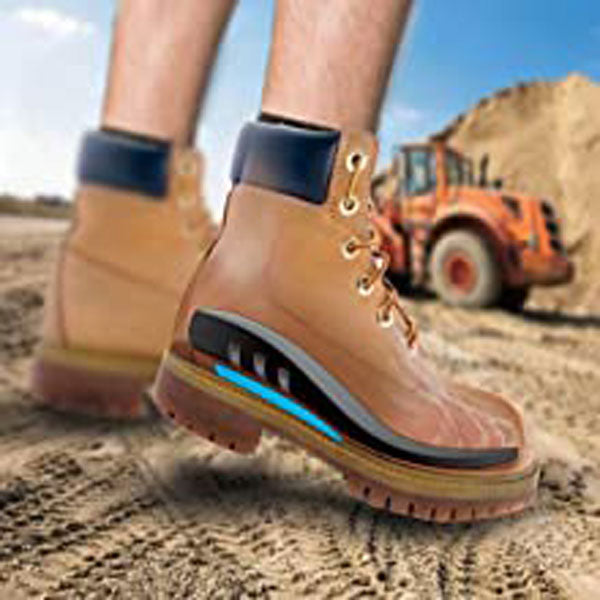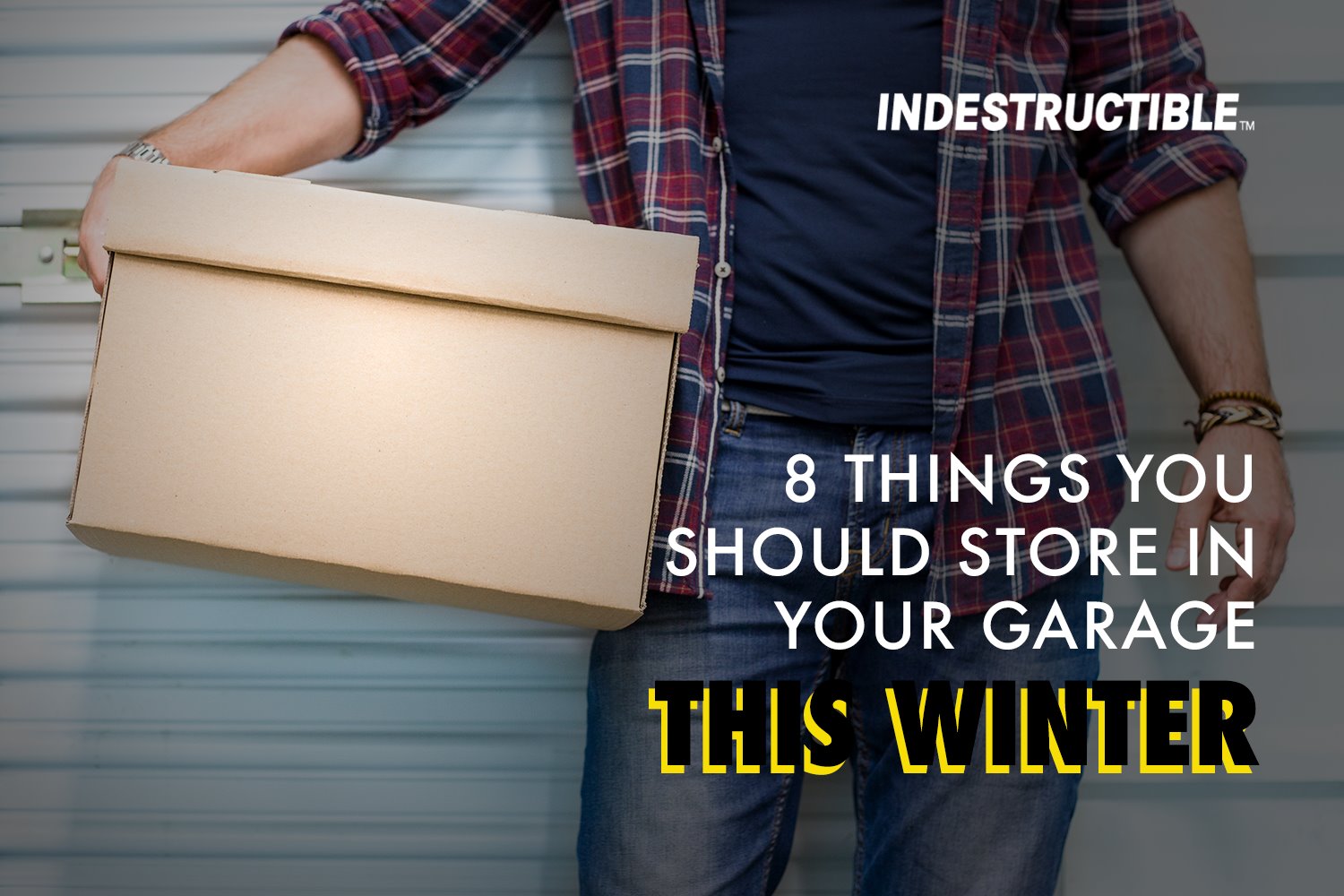More Than Power Tools & Cars
Garages are much more useful than we think, especially during the winter season.
Maybe you need to prepare for the winter time and need more space in your home to stock up on more supplies. Perhaps it’s time to get rid of all the clutter that’s building up around the house and get some peace of mind.
While most of us simply use it to park our cars and store our lawn care tools, the garage is a great place to keep other household items stowed.

Making use of the wallspace and overhead are just a few ways your garage can help you accomplish both of those goals as a makeshift storage for the winter. By installing shelves, hooks, and racks, you can store more things efficiently while taking up much less space.
But what exactly can you store in the garage in the cold? How should you store it? Here are 8 things you can keep stored in your garage during the winter to clear up space.
(Quick note: make sure your garage space is clean before you start stowing items inside. The last thing you want are dead leaves, creepy-crawlies and cobwebs taking over your stuff.)
Patio Furniture
During the winter months, we get exposed to rain, sleet, snow, hail, dirt, mud and insects. While not every family thinks about their lawn chairs and umbrellas outside, leaving patio furnishings exposed to these harsh elements can ruin the material and shorten their life expectancy. This makes putting all your patio furniture in your garage a good idea.
Start by stacking and folding chairs while disassembling patio tables. Cover your grill with a tarp or a cover. If there are removable cushions attached to your patio chair, keep them covered in plastic wrap so they don’t get dusty.
Make sure that you clean up all your equipment before you put them away. When it’s time to set up for the warm weather, give your furniture a quick wipe down.
Sports Gear
There’s a low chance you’ll see many children playing basketball on their driveways or riding their bikes and scooters around the neighborhood when there’s snow on the ground.
Items as small as balls, frisbees, and mitts to as big as bats, skateboards, even fishing poles should be carefully stowed away in the garage. Bikes can be better stored for space efficiency by installing a bike rack. You can also better conserve space by investing in vertical garage organizers or an overhead storage for sport equipment.

Camping Gear
Unless you plan on taking a trek to rough it out in the woods during the winter, you probably don’t need tents, containers, ice boxes, and other camping gear ready to go inside the house.
While most equipment can do well stacked in boxes or laying against the wood, it’s advisable to use wall pegs for camping chairs. Putting your tent in a plastic bag will also give it some protection for wear and tear. Sleeping bags should be fine in the house but if you’re low on room & space, make sure you protect them from bugs by placing them in a sealed bin or container.
Toys & Games
If you have young children, there’s a high chance toys tend to take up the most clutter space in your home. Keep messy areas to a minimum and avoid stepping on lego pieces and tiny plastic men by placing sturdy plastic toys in a plastic bin.
Just note that plastic is better suited to withstand the cold in your garage. Avoid putting any plushies, books or toys made of cloth in the garage so bugs and mildew don’t destroy them. If you’re storing any electronic games, make sure you remove the batteries before putting the toys away as the cold drains battery power.

Gardening & Lawn Gear
Most single family homes that have a garage also have a lawn, which means those families own lawn mowers, sprinklers, hoses and other lawn care items. In addition, gardening equipment like flower pots, gardening soil & seed trays don’t typically get used in the winter and they probably won’t get used until March or April come around.
Winter is the perfect time to begin making more space. Make sure all lawn care machinery is wiped down before putting it away. Consolidate and place empty bags of soil and unused pots in the garage. Use a garden tote or install a pegboard to place your gardening tools. You can even prepare for the spring by pre-filling trays with soil. Just make sure you place them in a way where the soil won’t spill over.
Note that certain chemical products like weed killers & cleaning products lose their efficiency when they stay in the cold for too long. In addition, items like birdseed and grass seed are a yummy favorite for rodents. It’s best to keep these stowed away in the basement, away from the reach of pets & children.
Canned Goods
Is your fridge full of food? Can’t find a place to chill your soft drinks or beers? Luckily your garage will be cold; just store them on shelves (if you don’t have a mini-fridge already in there.)
Aside from assorted drinks, you can also stash canned pet food, soups, vegetables and other foods for the winter months, that is if the air isn’t too moist as you don’t want the cans to rust. Make sure that temperatures don’t exceed 60 degrees Fahrenheit but don’t drop below freezing point.

Tender Flowers
Despite not gardening because of the winter conditions, certain vegetables and plants like tubers, flower bulbs & perennials can withstand the cold. They can be insulated during the winter months by being placed in loose dirt or saw dust. If temperatures reach below freezing, cover them with a blanket.
If you want to get a headstart on spring planting, pre-plant your flower bulbs in a pot, bringing them to bloom in just a couple months.
Root Vegetables
If you can keep your garage between freezing and 50 degrees Fahrenheit with limited humidity, then it’s a good place to stash your carrots, potatoes, beets, squash and other root vegetables.
Use screened, ventilated crates or wooden storage bins to store most of your vegetables. For carrots, fill a bucket with sand or dampened sawdust so they stay insulated without drying out. Onions and potatoes can be placed in a burlap sack or some other breathable material, as long as you don’t place them together.
For areas in the country that get snow, it’s inevitable that tools like snow blowers, shovels, ice scrapers and rock salt will be kept in the garage, too. Ideally, these items should be kept towards the front of the garage for easy access.

While this all might seem like a lot of work (which it is), placing things in storage is best done gradually over a couple weeks, rather than all at once. It’s best not to procrastinate on this because you’ll definitely not want to do all this work when it gets even colder outside.
Done right, using your garage as a storage can save a lot of time and headaches at home when preparing for the winter months.







